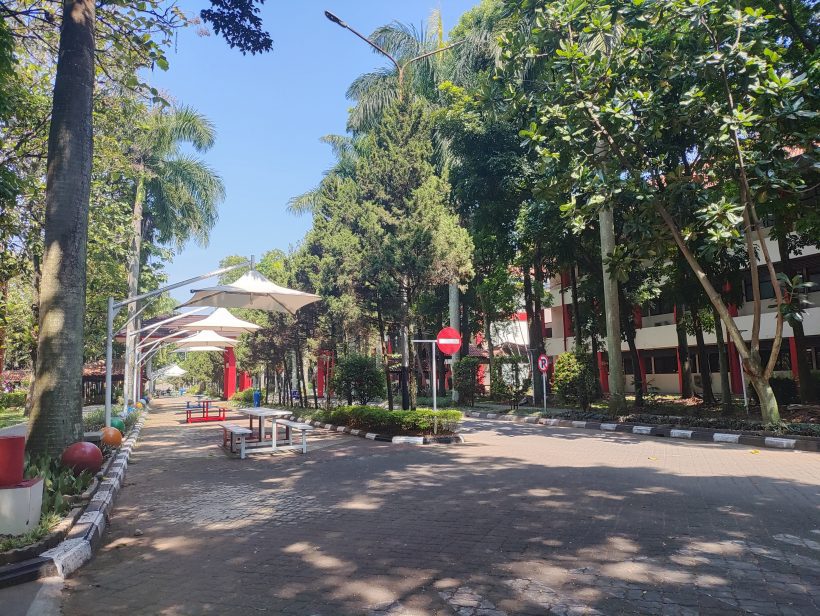As part of its commitment to the Green Campus concept, Telkom University continues to strive to create a more environmentally friendly and sustainable environment. One of the main initiatives that has been optimized is the improvement of pedestrian paths in the campus environment, with the aim of minimizing the use of private vehicles by students, lecturers, and employees.
This step was taken not only to support environmental sustainability, but also as a concrete effort to reduce air pollution and congestion in the campus area. By reducing dependence on motorized vehicles, the campus hopes to create a healthier and more comfortable atmosphere, while increasing awareness of the importance of an environmentally friendly lifestyle among academics.
Currently, the pedestrian paths at Telkom University have improved in terms of quality and quantity. The paths that were previously narrow and inadequate are now widened, decorated with green gardens, and equipped with benches that make it easier for students to rest or even study outdoors. This improvement in quality is expected to make students prefer to walk around campus rather than use vehicles.
In addition, the path is also designed to be integrated with other campus facilities, such as lecture buildings, libraries, and canteens, so that students can easily move from one location to another without having to rely on vehicles. Telkom University also provides various bicycle parking facilities, which encourage the use of more environmentally friendly modes of transportation.
The existence of this pedestrian path also helps create a safer and more comfortable campus atmosphere. By reducing the number of motorized vehicles in the campus area, the risk of accidents can be minimized. In addition, a quieter atmosphere without the noise of vehicles makes the campus environment an ideal place to study and work.
The construction of this pedestrian path is also in line with Telkom University’s mission to contribute to achieving the Sustainable Development Goals (SDGs), especially in terms of reducing carbon emissions and creating sustainable cities and communities. This initiative is not only beneficial for the environment, but also plays a role in improving the physical health of students and lecturers who walk every day.
With the existence of a comfortable and qualified pedestrian path, it is hoped that more academics will choose to walk or cycle rather than use private vehicles. This will not only reduce the carbon footprint, but also support the creation of a greener, healthier, and more sustainable campus environment.
Telkom University through the Green Campus program continues to demonstrate its commitment to creating real change for environmental desires. The improvement of the pedestrian path is just one of many initiatives that are being and will continue to be carried out to realize the vision of a green campus that is balanced between technology and environmental desires. It is hoped that this step can be an example for other campuses in Indonesia in an effort to create a more environmentally friendly and sustainable educational environment.


Leave a Reply